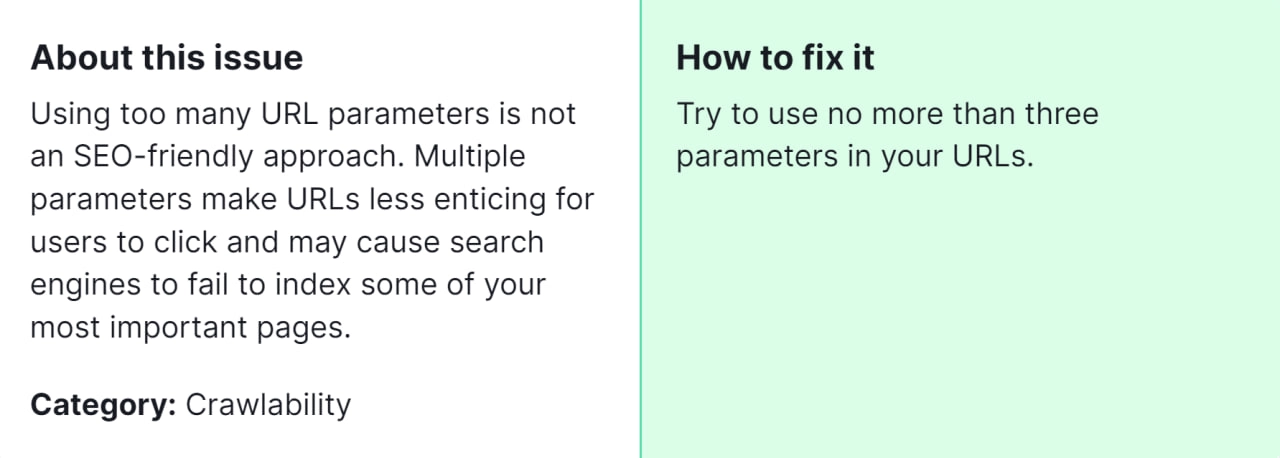Having too many parameters in URLs can negatively impact your website’s SEO performance and user experience. When search engines encounter URLs with excessive parameters, it can confuse them, leading to difficulty in indexing and ranking your pages. Additionally, complex URLs can be unwieldy and difficult for users to understand or share. Resolving this issue is crucial for optimizing your website’s visibility and usability.

Fixing the problem of too many parameters in URLs is essential for several reasons:
- Improved SEO: Simplifying URLs makes it easier for search engines to crawl and understand your website’s content, leading to better indexing and ranking.
- Enhanced User Experience: Clean, concise URLs are easier for users to read, remember, and share, contributing to a smoother browsing experience.
- Better Accessibility: Simple URLs are more accessible for users with disabilities who rely on screen readers or other assistive technologies.
How to Fix “Pages Have Too Many Parameters in Their URLs” IssueDetected by a Semrush Audit

Step 1: Identify URLs with Too Many Parameters
- Log in to your Semrush account and navigate to the Site Audit tool.
- Run a site audit for your website.
- Look for the specific issue titled “Pages Have Too Many Parameters in Their URLs” in the audit report.
- Note down the URLs flagged with this issue.
Step 2: Analyze the URLs
- Examine the URLs identified in the audit report to understand the parameters causing the problem.
- Determine if these parameters are essential for the functionality of the page or if they can be simplified or removed.
Step 3: Simplify Parameters
- Review each parameter in the URLs and assess its necessity.
- Remove any unnecessary parameters that do not contribute to the page’s content or functionality.
- If possible, consolidate multiple parameters into a single parameter to simplify the URL structure.
Step 4: Use URL Rewriting
- Implement URL rewriting techniques to create cleaner, more user-friendly URLs.
- Use descriptive words or phrases in the URL to reflect the content of the page.
- Ensure that the rewritten URLs are static and do not contain dynamic parameters unless necessary.
Step 5: Implement Canonical Tags
- For pages with similar content accessible through multiple URLs, use canonical tags to indicate the preferred URL to search engines.
- This helps prevent duplicate content issues and consolidates the ranking signals for the preferred URL.
Step 6: Update Internal Links and Sitemaps
- Update internal links within your website to point to the new, simplified URLs.
- Ensure that your XML sitemap reflects the updated URLs to facilitate easier crawling and indexing by search engines.
Step 7: Monitor and Test
- After implementing the changes, monitor your website’s performance in search engine rankings and user engagement metrics.
- Use tools like Google Search Console to check for any crawl errors or indexing issues related to the updated URLs.
- Continuously test and refine your URL structure to ensure optimal SEO performance and user experience.
If none of the solutions mentioned above resolve your issue, feel free to reach out to our team for personalized assistance and support.





